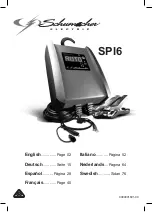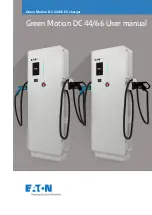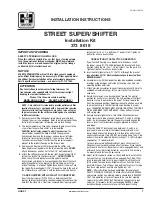
WE CHOOSE TO MAKE A DIFFERENCE WITH VOLVO ENVIRONMENTAL CARE.
Volvo is one of the most environ-
mentally responsible cars in the
world. This has come about because,
more than 25 years ago, Volvo
made the responsible choice -
to adopt a holistic approach to
the environment and find ways
to reduce the environmental impact
of the vehicles we make.
This outlook is exemplified in our
commitment to automotive excellence,
and is one of our core values - Safety,
Quality and Environmental Care.
We are convinced that it is possible
to be environmentally responsible and
produce better cars at the same time.
Volvo drivers apparently think
so, too. Their support of our efforts
continues to be reflected in the steady
increase in Volvo sales worldwide.
I n the United States, environmental
concerns affect many areas of daily
life, and much legislation has been
passed to help assure that
environmentally harmful substances
affecting air, water, soil, and living
things are reduced to low levels.
Volvo not only supports these efforts,
but has often shown others how a
systematic, long-term effort can pay
handsome environmental dividends.
Today, Volvo is seen as one of
the industrial leaders in environmental
care. Over the past two-and-a-half
decades, we have continually
examined every aspect of the design,
development, use and recycling
of a car. In hundreds of practical
applications, we have reduced
or eliminated the use of harmful
substances in every phase of the
manufacturing process and have
placed similar requirements on
our suppliers.
With Tomorrow in Mind.
The ECRIS (Environmental Car
Recycling in Scandinavia) research
project concluded in May 1998
after four years of work. Based on
the experience gathered from the
project, Volvo is now making recycling
an integral part of the product
development process. The Volvo Cars'
strategy for recycling-friendly design
is based on four main elements.
These are, in order of priority: to avoid
the use of hazardous materials and
substances; to facilitate the drainage
and dismantling of environmentally
hazardous materials; to minimize the
resources used in production; and to
design components so as to facilitate
material recycling.
A Holistic Approach.
I n our product development, we
use a highly sophisticated system,
EPS ( Environmental Priority
Strategies) in product design, which
has been primarily developed by Volvo,
the Swedish Environmental Research
I nstitute and Chalmers University of
Technology, Gothenburg, Sweden.
This is a computerized life-cycle
assessment tool that shows how
a certain component affects the
environment throughout its entire
life cycle, from raw materials
extraction, through manufacture
and use, to waste disposal.
95% Purification.
I n Volvo cars, an effective catalytic
converter eliminates up to 95/0 of the
carbon monoxide, hydrocarbons and
nitrogen oxides in the engine exhaust
emissions, compared with uncontrolled
levels. Official tests conducted in
accordance with U.S. and Canadian
Governmental Requirements have shown
that the emissions are practically as clean
after 50,000 miles (80,000 km) as they
are when the car is new - quality and
environmental care go hand-in-hand.
Restrictions on Hazardous Chemicals.
We have drawn up a black list of
chemical compounds that have been
eliminated from production and a grey
list of compounds that are to be avoided
and that, in many cases, are already
being phased out. These lists, which
include such substances as CFCs and
asbestos, apply both at Volvo and among
our suppliers. We have also achieved
a drastic reduction in the use of PVC.
We use waterborne paints in order to
minimize the emissions of solvents.
Made for Recycling.
All new Volvo models contain certain
recycled materials. To facilitate recycling,
all plastic components that weigh
more than 1.76 oz. (50 g) are labeled
according to international standards.
Environment at Volvo Cars of
North America, Inc
.
Volvo Cars of North America's
environmental activities include issues
such as environmental training for staff
at the company and at Volvo Retailers,
issuing a world-first Environmental
Product Declaration for the Volvo S80
and S/V40 (see it at www.volvocars.com)
and creating an environmental education
web site for high school science teachers,
www.environment.volvocars.com






































